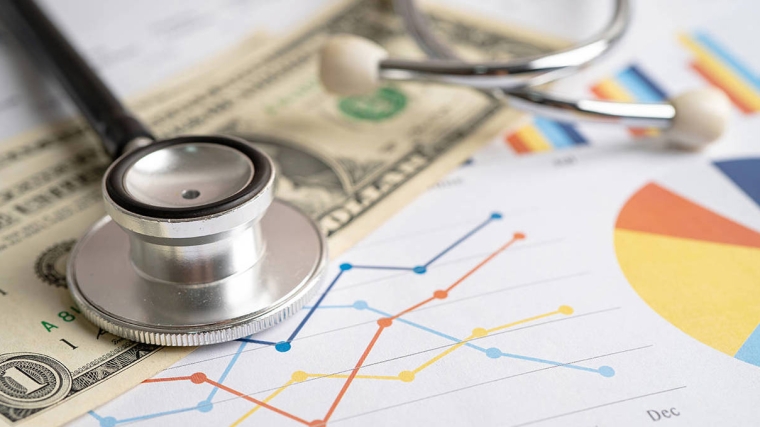
Despite dire predictions, major indicators for the US economy still seem robust. Although the recent government shutdown has delayed the release of third-quarter data, growth in the second quarter of 2025, at an annualised rate of 3.8%, was higher than expected, inflation seems under control – higher tariffs notwithstanding – and the stock market has been soaring.
To be sure, some might counter that aggregate growth is an imperfect measure of well-being; that inflation remains above the Federal Reserve’s 2% target; that the stock market gains may reflect a bubble that could burst at any time; and that such statistics do not capture the suffering of those directly affected by spending cuts or the government shutdown (from federal employees to food-stamp recipients). But even critics of the current administration would have to admit that the data have been stronger than they expected.
What do these data say about the wisdom of economists who predicted gloom and doom? To answer that, it might be useful to draw a parallel to medical doctors. Suppose a physician tells a patient with clogged arteries that she is at risk of a heart attack or stroke unless she takes preventive measures. Now suppose that patient remains healthy over the next year or two. Does this mean the doctor was wrong?
Obviously not. Perhaps the patient changed her lifestyle by eating healthier food, exercising, or taking a medication. In this case, the doctor’s prognosis did exactly what it was supposed to do: it caused the patient to take the right actions. Or perhaps the patient just got lucky in the short run, in which case the doctor’s prognosis could well be true in another year or two, absent a change in behavior.
An overwhelming majority of economists have been sounding the alarm about the US economy since the beginning of this year, and though this administration does not seem to listen to economic experts, it does listen to markets. When stocks crashed and Treasury yields spiked following “Liberation Day” (April 2), the announced tariffs were scaled back, postponed, or renegotiated. So, part of the reason that we have not seen large price increases or other substantially negative effects on the economy is that US policy took a slightly different path.
Still, this good news does not change the fact that the administration’s tariffs, the bilateral bargaining and legal challenges to them, and all the chaos they have caused will have long-run economic and political costs. Consumer prices and imports will respond sooner or later. Countries that have been buying time by negotiating with the United States may retaliate once they have adjusted to the new reality and built more resilience to capricious US trade policy.
Moreover, such an unstable, unpredictable environment undermines not only investment but also America’s standing as a global economic and political power. The damage from the administration’s self-inflicted wounds may have been contained in the short run, owing to the actual policies being slightly more reasonable than the rhetoric; but that rhetoric is doing damage, too.
In this sense, the US economy’s performance can be explained by a combination of the two scenarios in the doctor-patient analogy. The administration has read the signs and adjusted its course of action on trade policy, and it has benefited from the fact that the full negative effects of its policies will take time to manifest.
But the analogy is incomplete. Unlike an ailing patient who simply cannot change her ways, the US economy has proven extremely dynamic and capable of reinventing itself – notwithstanding bad policies and chaotic policymaking. The main source of this dynamism over the last three decades has been new technology, with AI representing only the most recent advance. High hopes for AI have fueled most of the stock-market gains since last year. While many fear that the bubble could burst at any moment, anyone who has used large language models over the past two years will have seen not only what they can already do, but also the immense and rapid progress they have made.
While skeptics question whether such rapid improvements will continue, raising concerns about medium- and long-run economic effects, the fact is that US technological innovation has delivered time and again – from the spread of the PC in the 1980s to the internet to mobile technologies more recently. So far, the basic promise has consistently materialised, even if there have been speculative bubbles along the way.
For this reason, I remain optimistic. The US has proven capable of repeatedly producing technological breakthroughs and embracing them in ways that transform markets and daily life. Despite the recent erratic policies and mistakes, I would not write off the US economy. As the saying goes, “anyone who has bet against the US economy lost” – at least in the long run.
Pinelopi Koujianou Goldberg, a former World Bank Group chief economist and editor-in-chief of the American Economic Review, is Professor of Economics at Yale University. Copyright: Project Syndicate, 2025, published here with permission.

We welcome your comments below. If you are not already registered, please register to comment.
Remember we welcome robust, respectful and insightful debate. We don't welcome abusive or defamatory comments and will de-register those repeatedly making such comments. Our current comment policy is here.